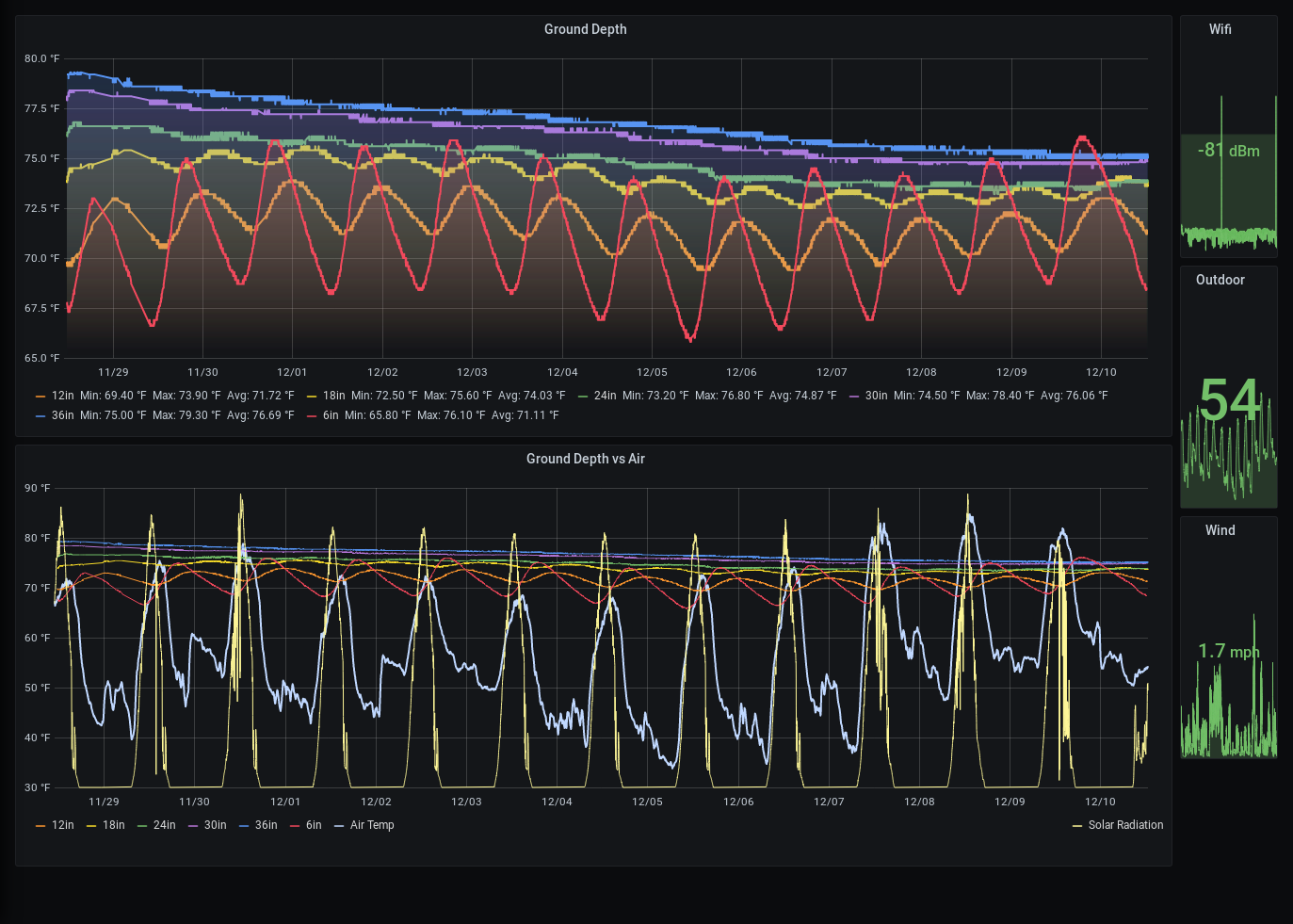Well, actually step 1 is to solder a bunch of DS18B20's in star configuration to a WemosD1 Mini. One thing worth noting, I used the 5v output instead of the 3.3v output, because I wanted the extra power for these. As Hackaday articles in the past have shown, this works just fine.
Sensors were set every 6 inches, so I could measure the difference as it goes deeper.
So it was soldered up, and placed in a box. Easy.
The hard part, is digging a 36" hole in Arizona. I used a combination of lots of water, a drill with mini-auger, and a chunk of rebar and a hammer to ream out a 1" hole 36" into the earth.
2 Days later, and the hole was dug, sensor inserted, and backfilled with mud to pack it in, and now I have a ground sensor buried in the ground. Code was a simple ESPHome device wired to Homeassistant.
Kind of. First problem was that the ESP was very slightly below ground level, which reduced it's wifi range to basically nothing. I ended up fixing this by throwing another AP on the floor in the corner of the house closest to the sensor. It's just *barely* in range now, at least good enough to get readings continuously.
It's also worth noting, this is my second attempt at doing this. Years ago I took 6 sensors, wired them, buried them, and then hooked them up to my LinkUSB 1-wire dongle. I got data for 2 whole days before something shorted out. With the sensors now buried, it was impossible to debug, and I gave up for a long time. The new DS18B20 sensors that come in nice little waterproof packages finally tempted me again to try this. It seems to work finally.
So what is it I'm attempting to do here exactly anyhow?
Well the basic question is this: Does the temperature of the ground impact the temperature of the air, and if so, how, and is it noticable? We have all heard of the "heat island" effect, but does that apply to the normal dirt that is everywhere on earth? Is a record high created by a process over a few weeks of ever-increasing ground temperatures, so that finally the overnight cooling just doesn't happen? I don't know, but I suspect it will take a year to find out.
In the meantime, here is super pretty graph data from a few weeks of running the sensor.
 Notice the *atrocious* wifi reception. Just barely good enough!
Notice the *atrocious* wifi reception. Just barely good enough! Tim Rightnour
Tim Rightnour
Discussions
Become a Hackaday.io Member
Create an account to leave a comment. Already have an account? Log In.